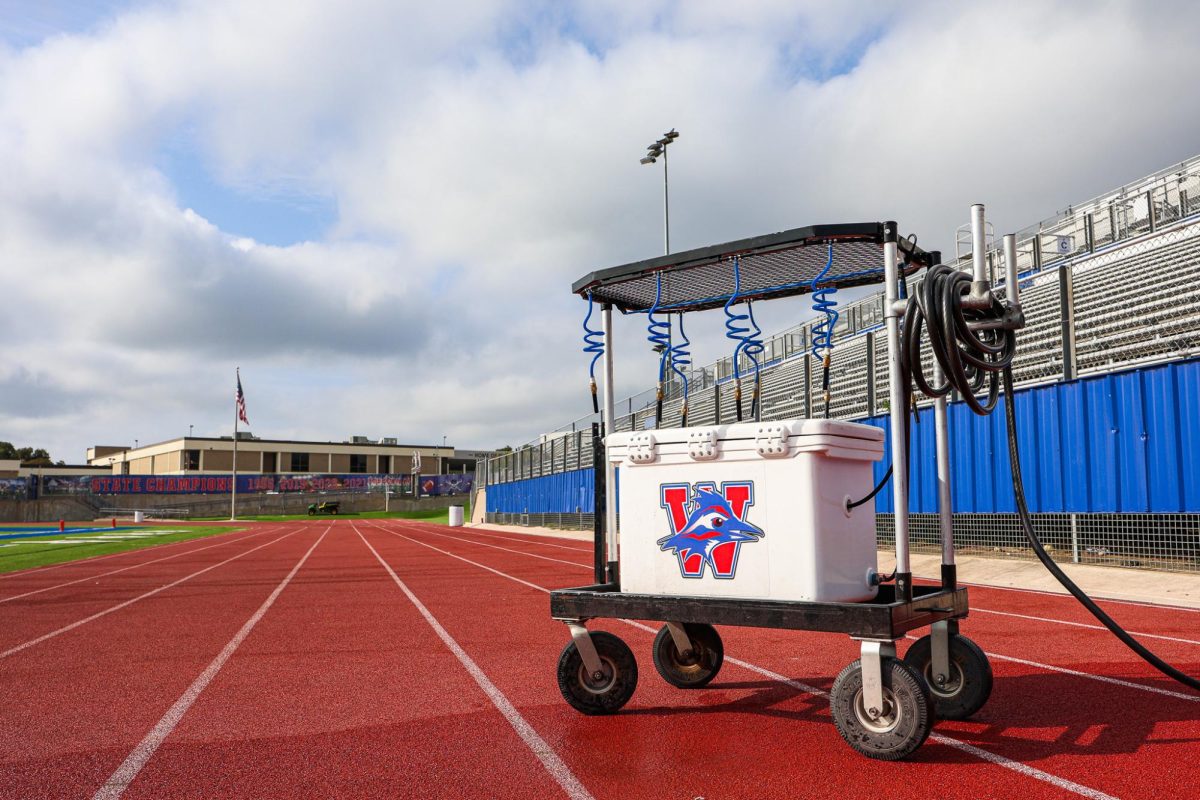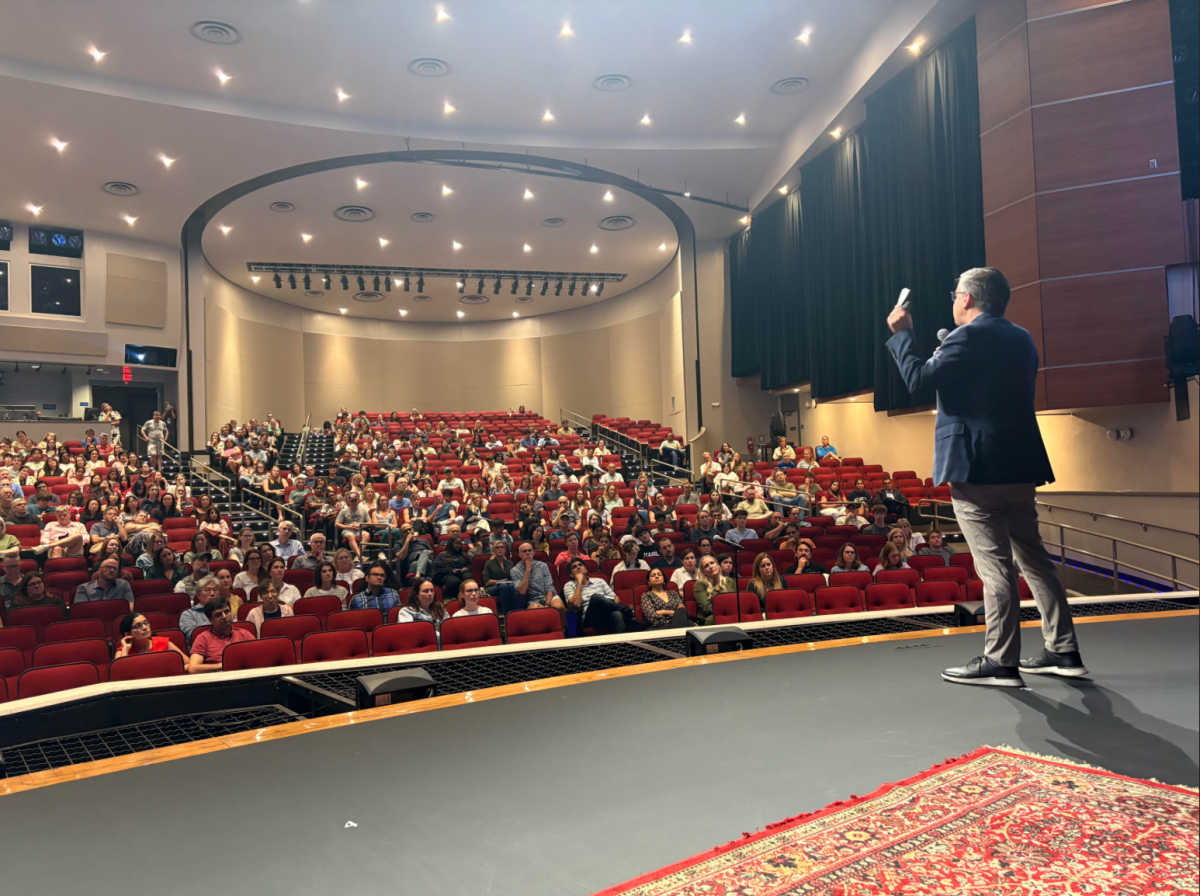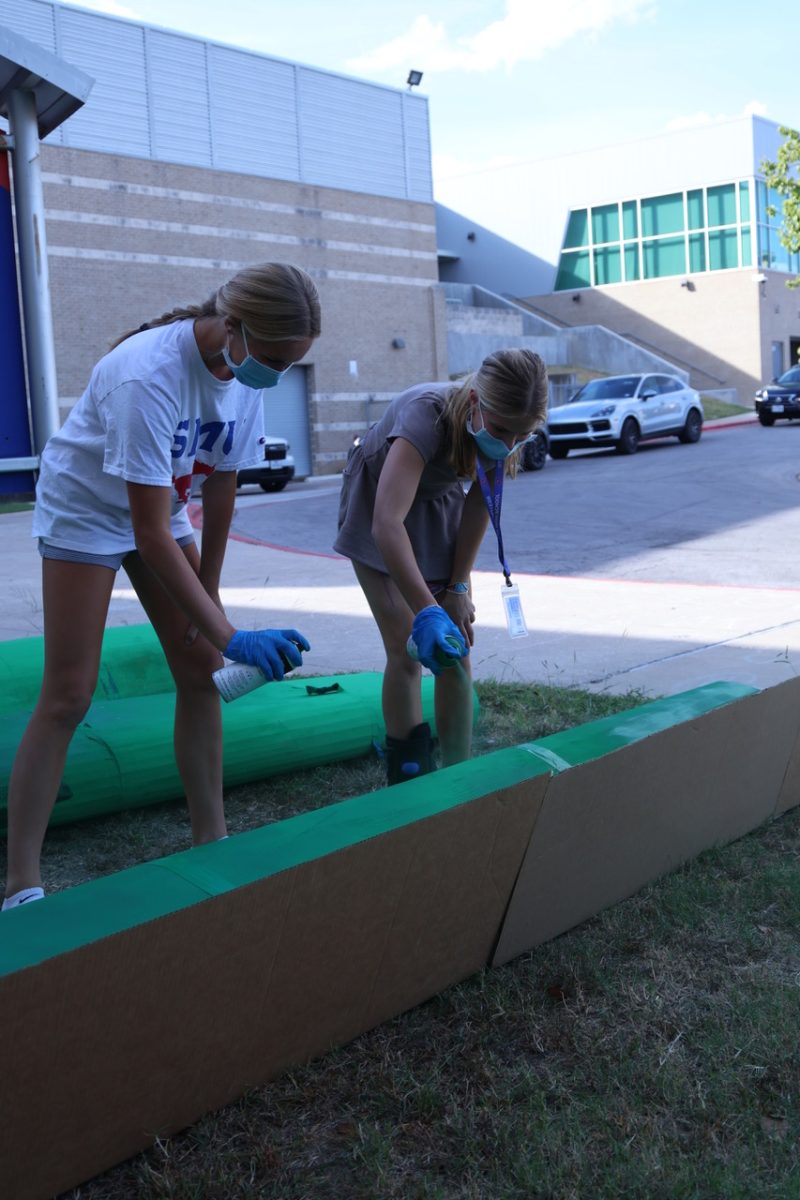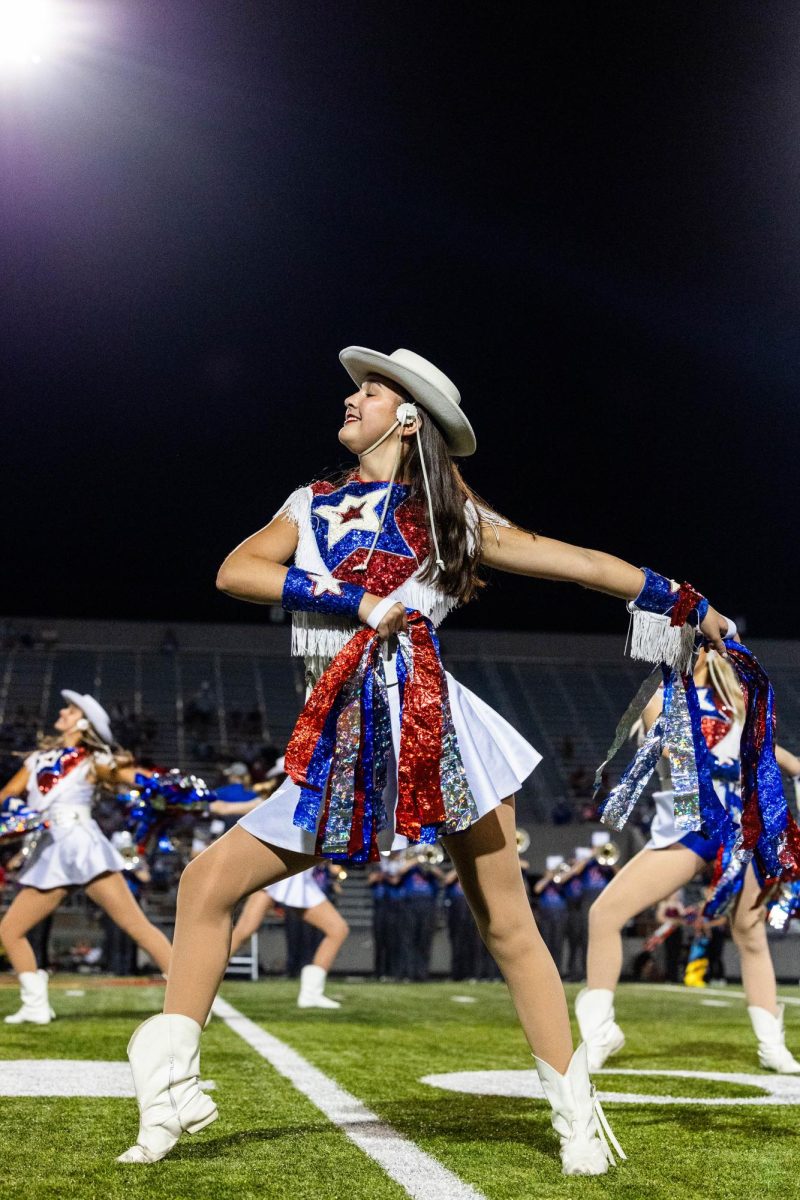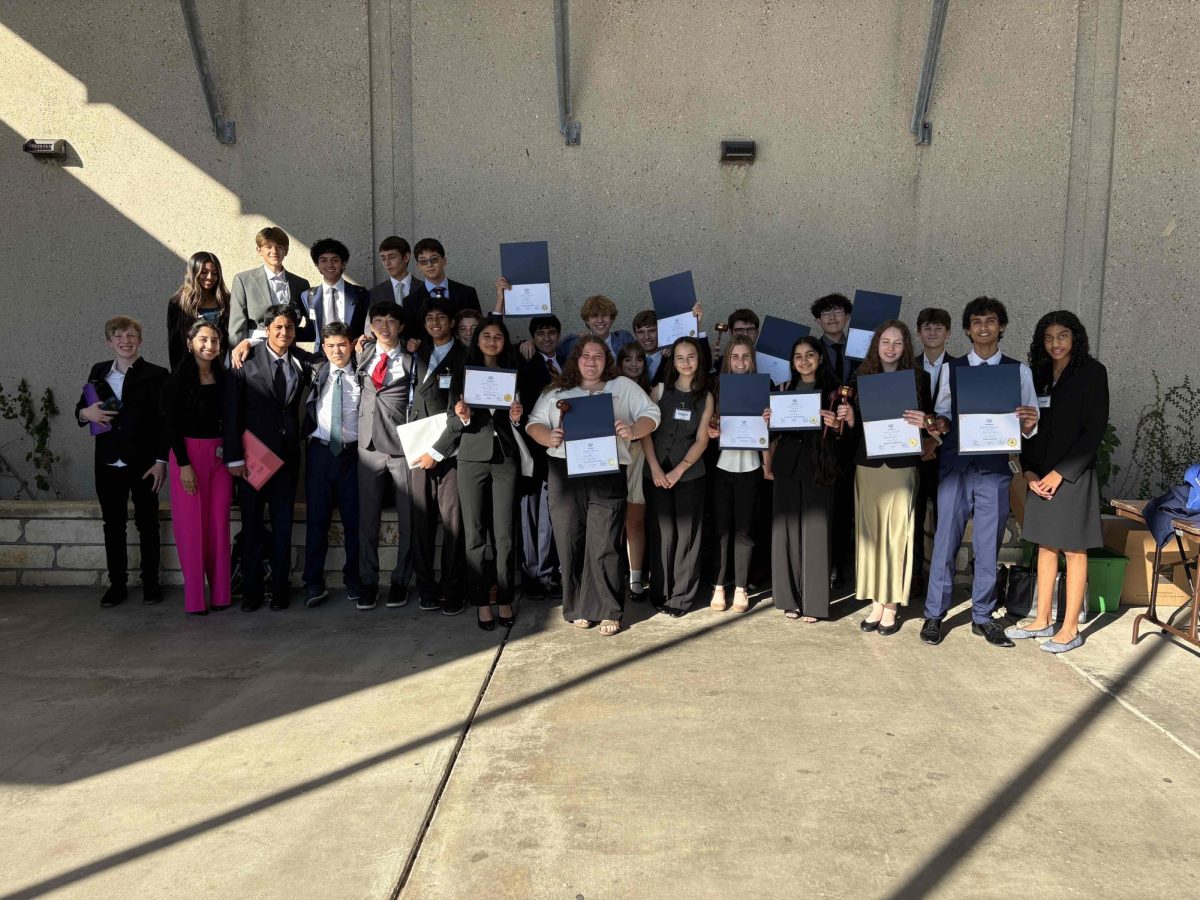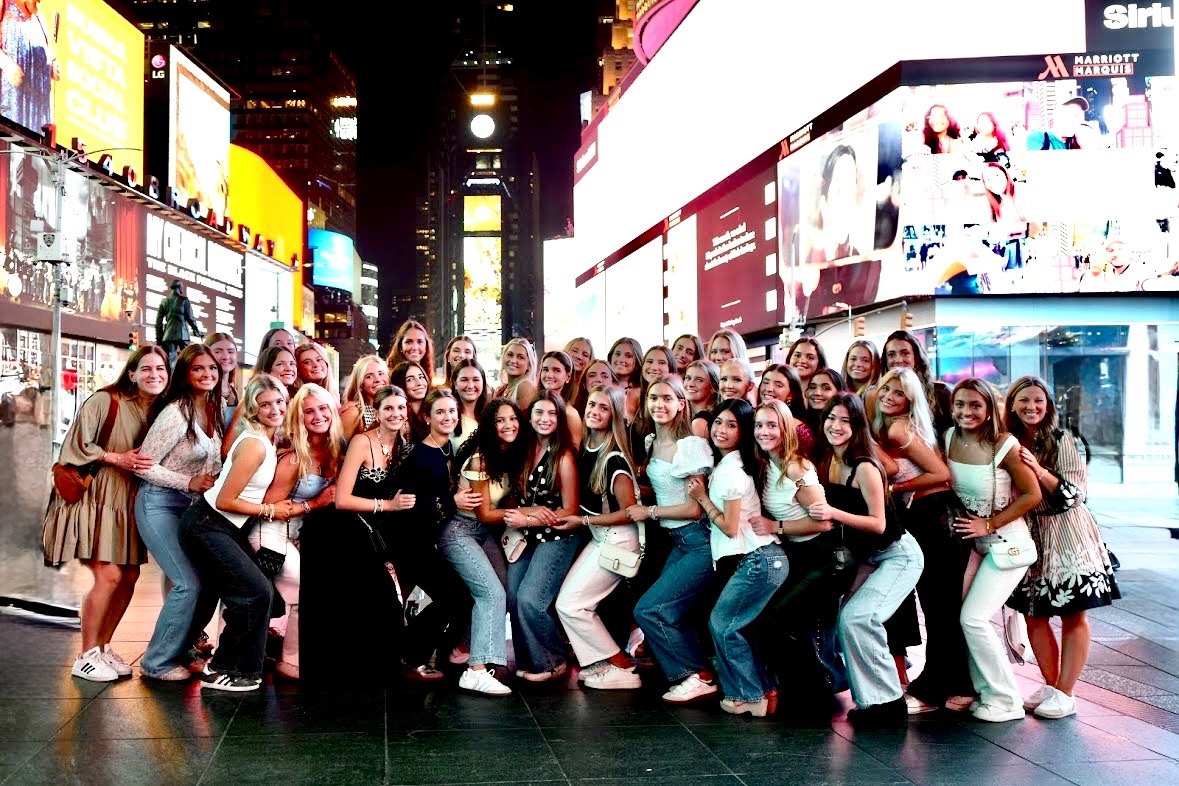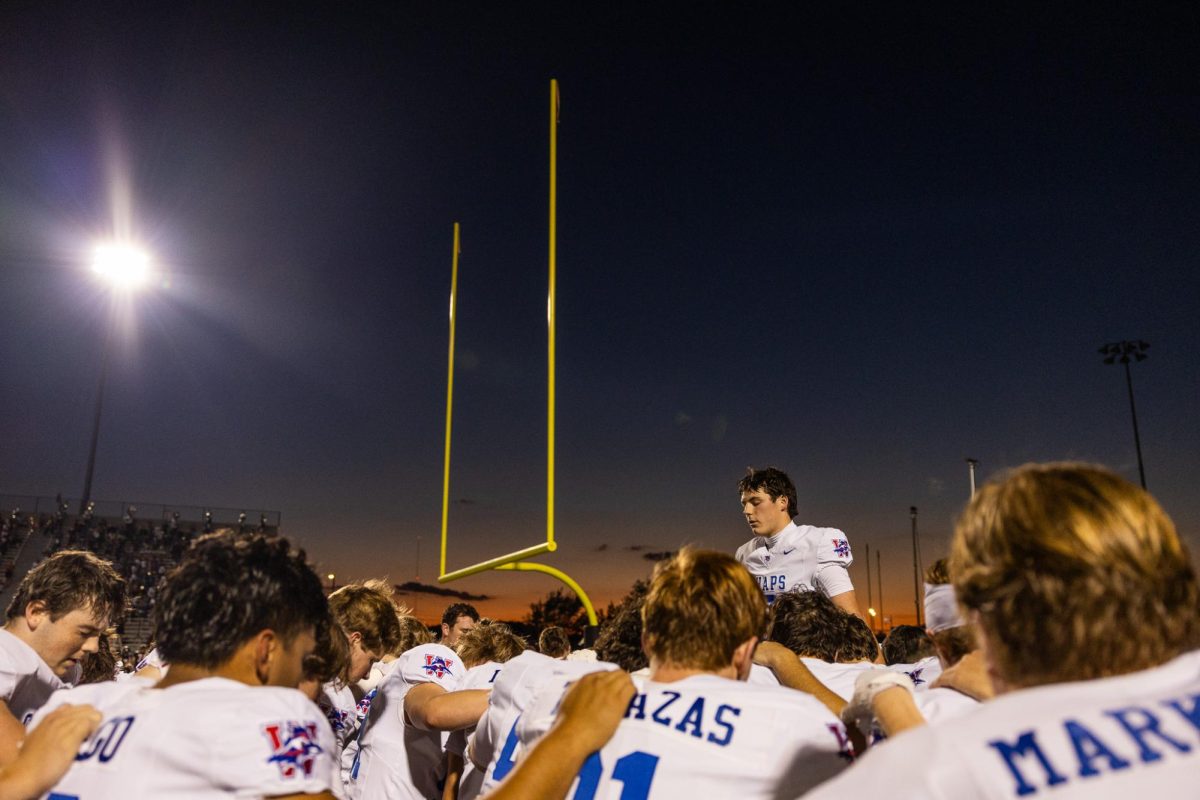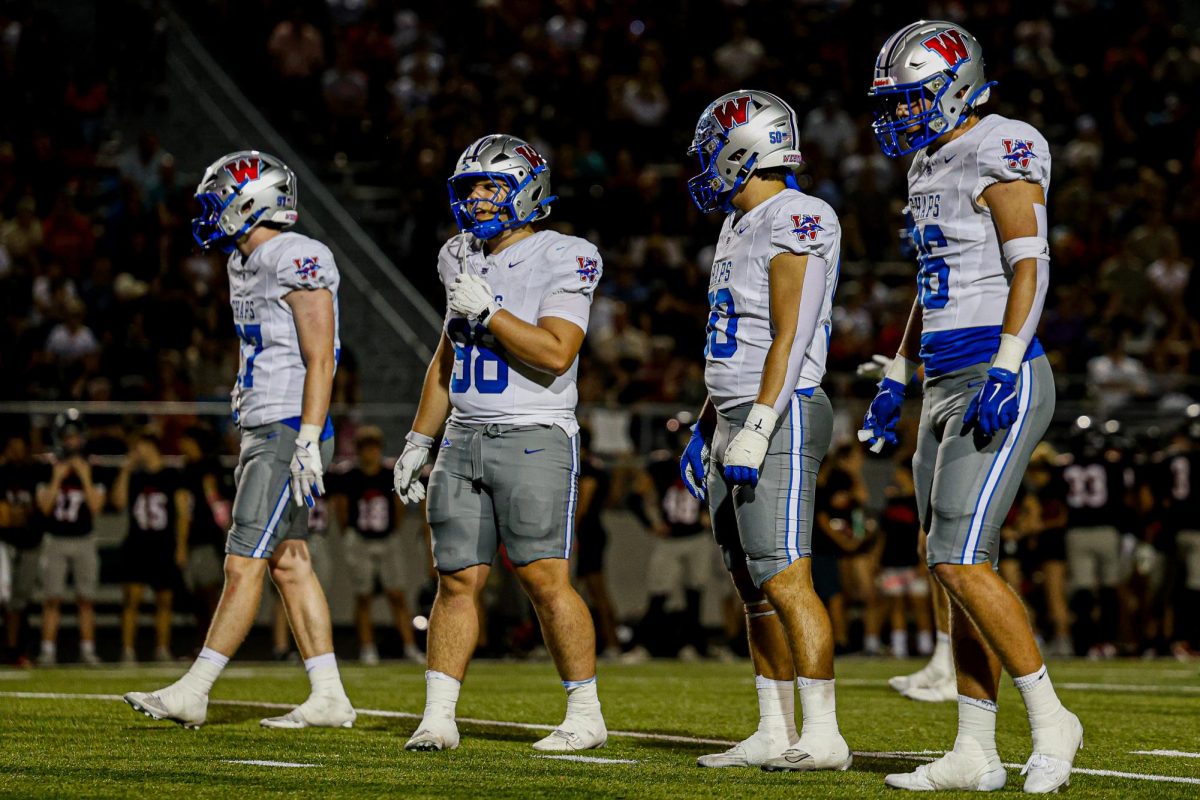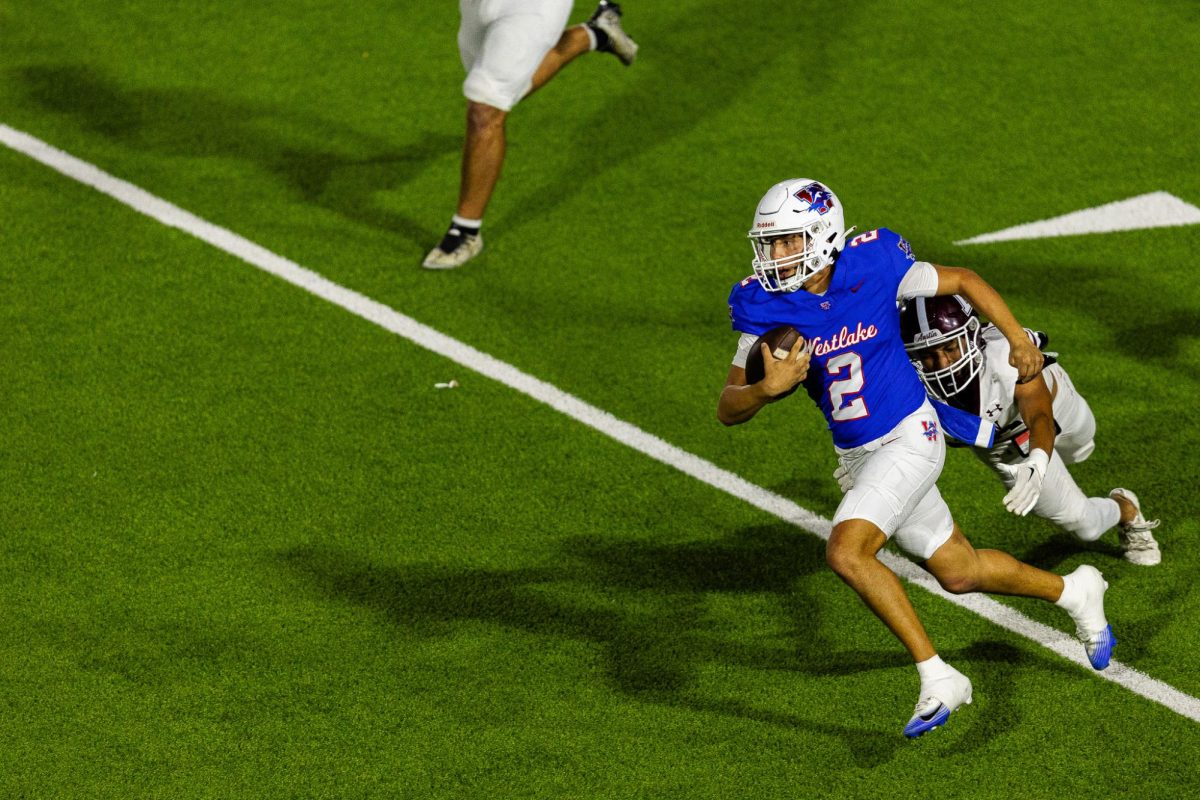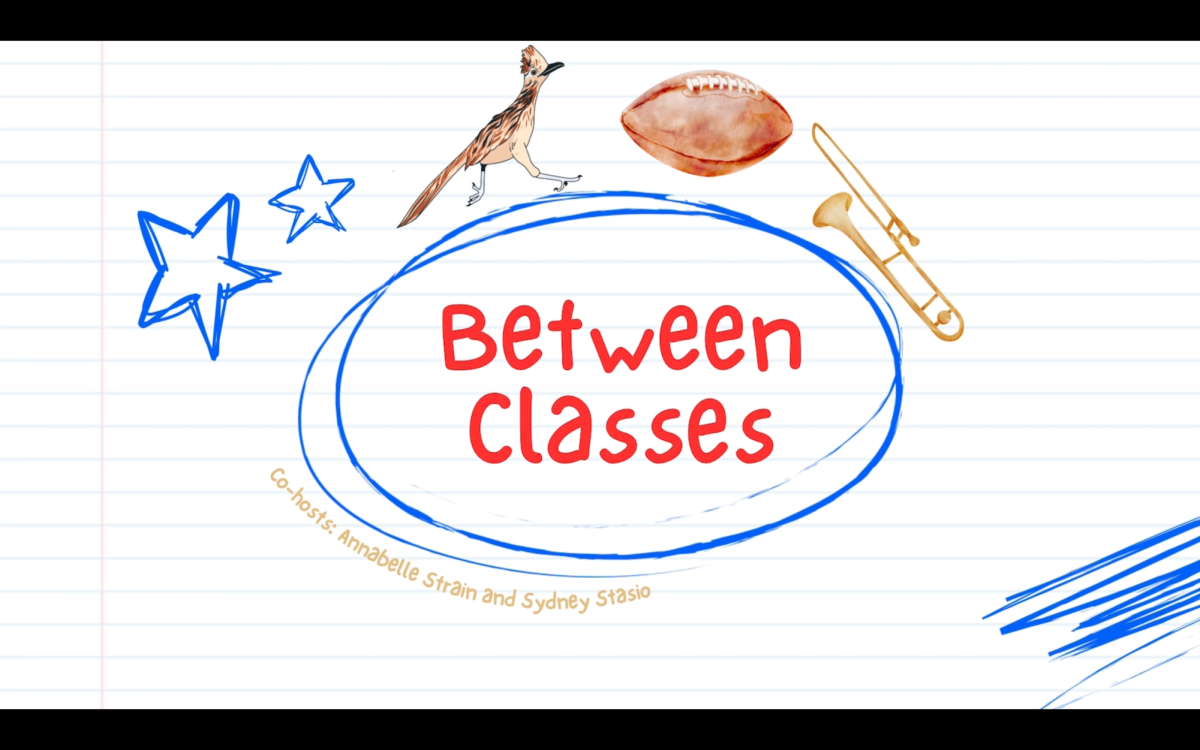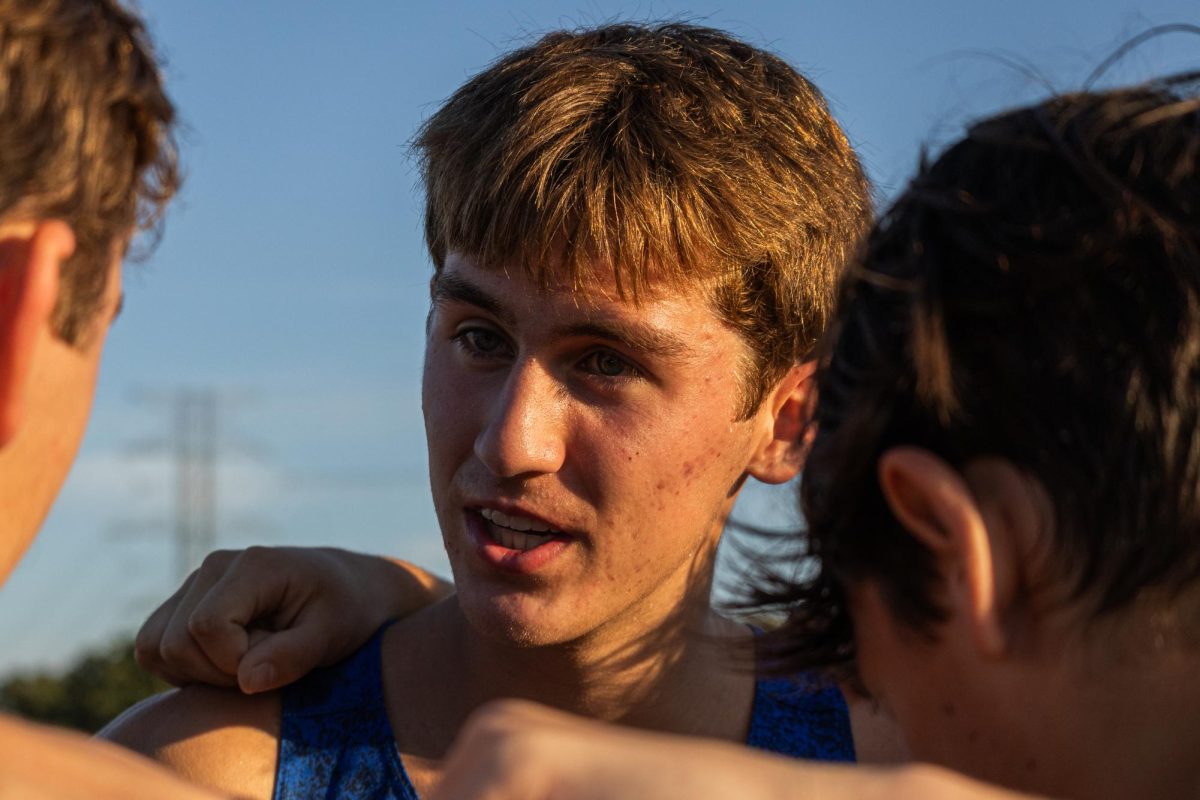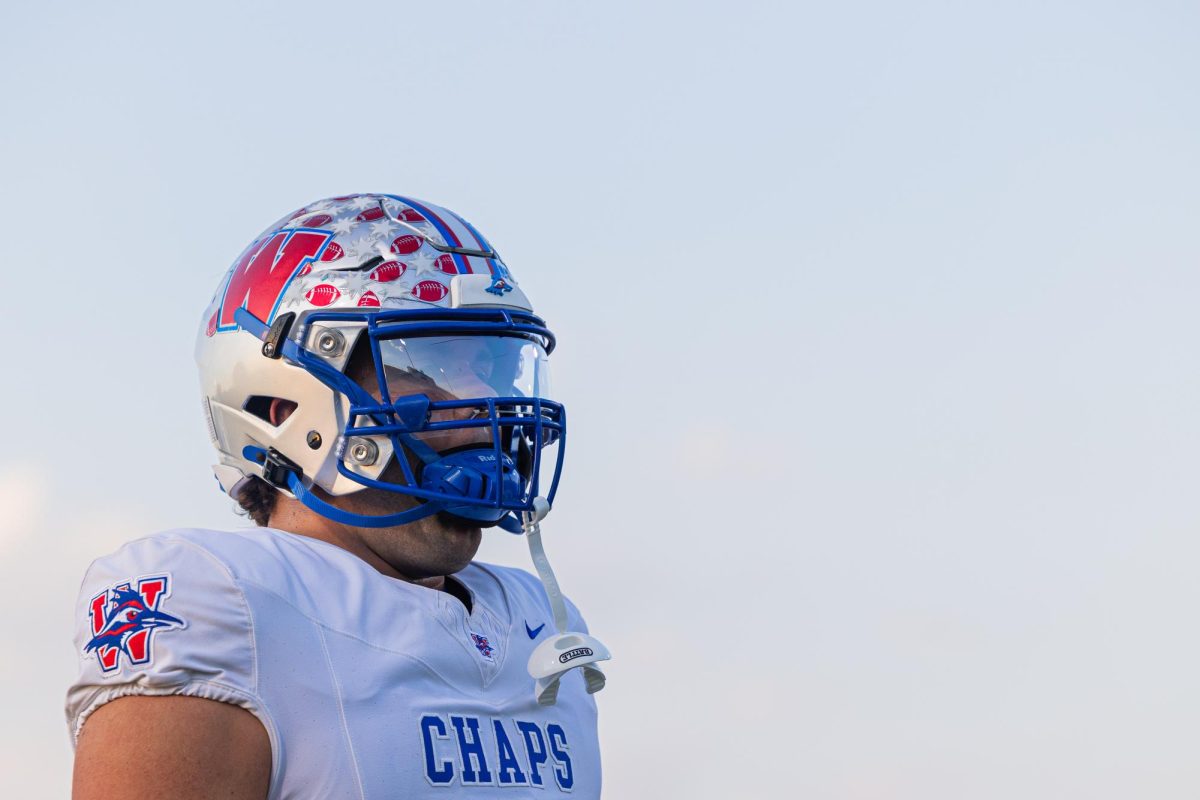At Chaps football games, students in black collared shirts roam the sidelines, helping the athletes stay hydrated and healthy. After the season ends, these students in Sports Medicine can earn up to 100 volunteer hours, enough to satisfy the Chaps in Service 70 volunteer hour requirement.
Students have the opportunity to enroll in the first period Athletic Training – Sports Medicine class from the minute they step on campus. Sports Med helps athletes from all UIL sports, including the roughly 350 kids in the football program, recover and stay healthy throughout the season. With only three trainers, the work piles up quickly, making students’ roles even more important.
“We really depend on the students,” Head Trainer Cody Watkins, M.Ed, LAT, ATC said. “Especially the ones who have been in it two or three years and are really good at taping. I can say ‘[senior Chase] Cooley go grab this’ and he knows where it is.”
Alongside helping the trainers, students continuously take opportunities to learn about important techniques in sports medicine, such as taping.
“It gives you a lot of hands-on experience,” senior Reese Park said. “You get to see what a lot of the head trainers do.”
As the week progresses and the football team gets closer to gameday, the trainers have an injury report with three colors: red, yellow and green, with green being the healthiest. While half of the group stays on the field during practice, the other half is in the trainers office helping those players recover.
“The whole goal is to ramp these guys up safely and prepare them to play so they can finish the game Friday,” Watkins said. “So throughout the week, we’re making doctor’s visits and we’re coordinating with physical therapists.”
On gameday, the crew starts preparing long before kickoff. They use “checklists” to make sure all items are packed for the game, including fans, gatorade and snacks.
For home games, the crew will play music while taping players, a crucial part of player preparation.
“It’s a little bit more relaxed and fun, because we can hype ourselves up in our own way and our own environment,” Watkins said. “Sometimes we’ll do a little potluck for the students, so we have a little party in here.”
Especially for away games, the workload increases as the crew has to load supplies into a U-Haul and drive it to the game. Despite all of their plans, sometimes things can go awry. When traveling to Crusader Stadium for the Chaps opening week matchup against Prosper, Sports Med forgot batteries for their walkie-talkies which made Watkins stop for batteries along the road.
Park plans to use the skills from Sports Med to go into plastic surgery.
“[Sports Med] helps with the interpersonal stuff,” Park said. “You take all these classes, you learn all of this stuff about techniques, but you don’t learn how to actually talk to people [but in Sports Med you] are able to actually have those interactions. It’s very helpful.”
Now three years into the Sports Med program, senior Chase Cooley feels as if he’s been tasked with more responsibility. He even hopes to pursue a career in medicine, currently working at a Division Two college in Georgetown.
“We are doing the exact same things up there,” Cooley said. “[Sports Med is] a college level class, it teaches you exactly what you need to know at the next level.”
In addition to teaching students about the intricacies of sports medicine, it provides valuable experience for students to use later on. Watkins points to the fact that Sports Med is a self-driven class.
“One thing that sets this apart is the experience,” Watkins said. “The best part of this class is that it prepares you for time management and your ability to be responsible for schedules.”

